Image-Guided SRT Compared to Mohs Surgery
Skin Cancer Can Be Cured Without Surgery
For years, Mohs surgery was the standard treatment for people with skin cancer. Now, people with basal or squamous cell skin cancers have Image-Guided SRT—the treatment option that cures skin cancer without surgery.
Learn about 2 skin cancer treatment options
Mohs Surgery
Image-Guided SRT
The skin cancer is cut out of the skin, making a wound and leaving a scar.
Low amounts of X-ray energy are used to kill the cancer cells, which lets healthy skin grow back.
The size and depth of the skin cancer is only known after the cutting starts.
Uses SRT technology with ultrasound images to find, measure, and treat the skin cancer cells and see it shrink over time to be sure the cancer is cured.
Local anesthesia is used to dull the pain prior to cutting.
Anesthesia is not needed.
More than 1 surgery during the day may be needed to remove all the skin cancer.
Eighteen to 25 short treatment sessions (about 10 minutes each) over the course of several weeks.
The surgery leaves wounds, which will need to be cared for by changing bandages, not showering, and not doing normal activities.
There is no bleeding or wounds, so you do not need to skip normal daily activities.
Scarring may need to be fixed with reconstructive surgery.
There is no scarring.
Only 1 skin cancer can be treated at a time.
More than 1 skin cancer can be treated at a time.
Mohs surgery works 96% to 98% of the time.
Image-Guided SRT cures over 99% of basal and squamous cell skin cancers.
Mohs Surgery
The skin cancer is cut out of the skin, making a wound and leaving a scar.
Image-Guided SRT
Low amounts of X-ray energy are used to kill the cancer cells, which lets healthy skin grow back.
Mohs Surgery
The size and depth of the skin cancer is only known after the cutting starts.
Image-Guided SRT
Uses SRT technology with ultrasound images to find, measure, and treat the skin cancer cells and see it shrink over time to be sure the cancer is cured.
Mohs Surgery
Local anesthesia is used to dull the pain prior to cutting.
Image-Guided SRT
Anesthesia is not needed.
Mohs Surgery
More than 1 surgery during the day may be needed to remove all the skin cancer.
Image-Guided SRT
Eighteen to 25 short treatment sessions (about 10 minutes each) over the course of several weeks.
Mohs Surgery
The surgery leaves wounds, which will need to be cared for by changing bandages, not showering, and not doing normal activities.
Image-Guided SRT
There is no bleeding or wounds, so you do not need to skip normal daily activities.
Mohs Surgery
Scarring may need to be fixed with reconstructive surgery.
Image-Guided SRT
There is no scarring.
Mohs Surgery
Only 1 skin cancer can be treated at a time.
Image-Guided SRT
More than 1 skin cancer can be treated at a time.
Mohs Surgery
Mohs surgery works 96% to 98% of the time.
Image-Guided SRT
Image-Guided SRT cures over 99% of basal and squamous cell skin cancers.
IG-SRT (Image-Guided Superficial Radiation Therapy or Image-Guided SRT) is a type of radiation used just for skin cancer. Ultrasound imaging guides the treatment to kill skin cancer cells using low levels of X-ray energy.
Image-Guided SRT can be used on nonmelanoma skin cancers (i.e., various types of basal cell carcinoma, squamous cell carcinoma and squamous cell carcinoma in-situ) and Keloid conditions.
During each visit, treatment can be completed in as little as 10 minutes.
The number of treatments can vary depending on the tumor size, depth, and complexity of the individual situation. Typically, treatment with GentleCure involves 18 to 25 short treatment sessions (about 10 minutes each) over the course of several weeks.
Mohs surgery is a common treatment for skin cancer. It is unlikely that the skin cancer would return after Mohs. If it does, or if you have a new skin cancer in the same area, you can get treatment with Image-Guided SRT.
Having Image-Guided SRT instead of Mohs would spare you the cutting, bleeding, wound care, and surgical scarring that often come with Mohs. If your cancer returns or you have a new cancer, be sure to talk with your dermatologist about the differences between Image-Guided SRT and Mohs surgery.
Image-Guided SRT cures over 99% of basal and squamous cell skin cancers; it is very rare for a skin cancer to return. However, it is very common for people who have one skin cancer to get another skin cancer. In fact, 40% to 50% of people who have one skin cancer will be diagnosed with another skin cancer within 5 years.
Image-Guided SRT can be used to treat more than one skin cancer at a time. It is very unlikely that a skin cancer would come back in the same spot where you had Image-Guided SRT, but you may get another skin cancer in the same spot. This can happen because of sun exposure or any of the other factors that cause skin cancer. All previous radtiation records near the area of new skin cancer will be obtained and examined for safety puproses. If you get another skin cancer in the same area, talk with your dermatologist about all of your treatment options.
Image-Guided SRT has a higher cure rate than Mohs surgery for basal and squamous cell skin cancers. Image-Guided SRT has a 99.5% cure rate for non-melanoma skin cancer, while Mohs surgery has a 98% cure rate. A discussion with your dermatologist will help determine which treatment is best for you.
Clinical research supports the safety and effectiveness (99%+) of surgery-free GentleCure™ (Image-Guided SRT) in the treatment of basal cell and squamous cell skin cancers.
See the difference between Mohs surgery and Image-Guided SRT
Many people do not realize the wound care and recovery time with Mohs surgery. One in 3 people need reconstructive surgery after Mohs, which takes months or longer to heal. Image-Guided SRT is different. There is no cutting, wounds, surgical scarring, or limits to your daily activities during treatment.
Image-Guided SRT results
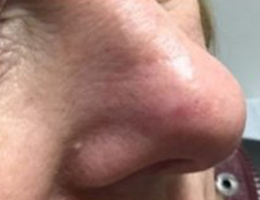
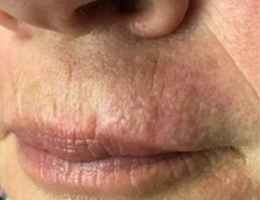
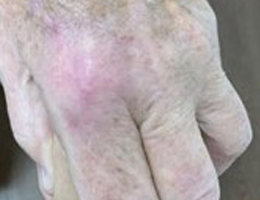
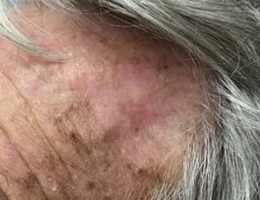
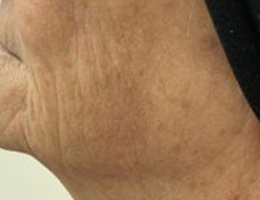
What is important to you in a skin cancer treatment?
Image-Guided SRT may be the right option if you:
- Fear surgery
- Cannot have surgery because of other health problems
- Have more than one skin cancer that needs to be treated
- Do not want the side effects of surgery (bleeding, scarring, pain, reconstructive surgery)
- Care about how your skin looks after treatment
- Want to see the cancer shrink and know treatment is working
Ask yourself these questions to help think about which treatment may be right for you

Hear how others describe having Image-Guided SRT or Mohs surgery
Everyone Deserves a Surgery-Free Treatment Option
Participate in change. Do not let radiation oncologists limit your treatment options to protect their income. Sign a FREE petition to tell Medicare and health insurers that you expect them to CONTINUE COVERING an FDA-cleared, less invasive treatment option.